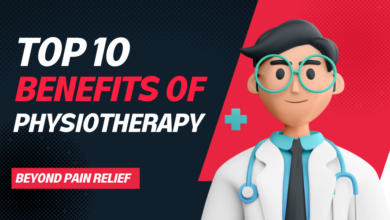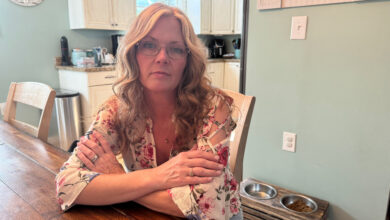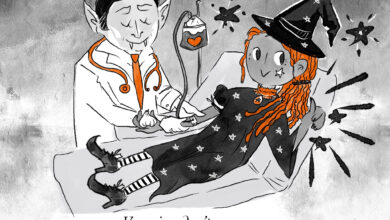A Surgery Shatters Retirement Plans and Leads to Bankruptcy

They took everything we had.
Sherrie Foy
Sherrie Foy, 63, Moneta, Virginia
Approximate Medical Debt: $850,000
Medical Issue: Colon surgery
What Happened: Sherrie and Michael Foy thought they’d made all the right preparations when they moved to rural southwestern Virginia after Michael retired from Consolidated Edison, New York’s largest utility.
Sherrie Foy loved horses and had started to rescue unwanted animals. The couple had diligently saved. And they had retiree health insurance through Con Edison.
“We were never rich,” Sherrie said. “But we had what we wanted.”
Then in 2016, Sherrie, who had lived for years with persistent bowel irritation, had her colon removed. After the surgery, she contracted a dangerous infection and barely survived.
The complications produced nearly $800,000 in bills from the University of Virginia Health System for services that weren’t covered by the Foys’ health insurance.
When the couple couldn’t pay, the state sued Sherrie. The only way past it, the Foys concluded, was to declare bankruptcy.
The nest egg they’d carefully built so her husband could retire early was wiped out. They cashed in a life insurance policy to pay a lawyer and liquidated savings accounts they’d set up for their grandchildren.
“They took everything we had,” Foy said. “Now we have nothing.”
What’s Broken: Foy fell victim to a gap in her husband’s retiree health insurance plan that capped lifetime coverage at $1 million.
Such caps were more common before the 2010 Affordable Care Act, though some plans with these caps were grandfathered in.
Relatively few patients with medical debt are sued, and some medical centers have been forced to scale back the practice in recent years after news reports about the lawsuits. (The University of Virginia Health System changed its policies following a 2019 KHN investigation.)
But hospitals and other medical providers still rely on the courts to collect from patients.
More broadly, bankruptcy caused directly or partially by medical debt remains a significant problem.
A nationwide KFF poll conducted for this project found about 1 in 8 adults with health care debt have been forced to declare bankruptcy.
What’s Left: Sherrie said her health has improved.
After the complications from her surgery in Virginia, she returned to New York to seek care at a hospital she said saved her life. That hospital never billed her, she said. She doesn’t know why, but she believes she may have qualified for charity care.
The bankruptcy has been devastating. The Foys get by on Michael’s pension and their Social Security checks.
The same year they declared bankruptcy, Michael also had a heart attack, and their daughter was diagnosed with breast cancer.
“It was a disaster of a year,” Sherrie said. “No one should have to go through this.”
Sherrie has no health insurance. She hopes there won’t be more major medical bills before she turns 65 and qualifies for Medicare.
About This Project
“Diagnosis: Debt” is a reporting partnership between KHN and NPR exploring the scale, impact, and causes of medical debt in America.
The series draws on the “KFF Health Care Debt Survey,” a poll designed and analyzed by public opinion researchers at KFF in collaboration with KHN journalists and editors. The survey was conducted Feb. 25 through March 20, 2022, online and via telephone, in English and Spanish, among a nationally representative sample of 2,375 U.S. adults, including 1,292 adults with current health care debt and 382 adults who had health care debt in the past five years. The margin of sampling error is plus or minus 3 percentage points for the full sample and 3 percentage points for those with current debt. For results based on subgroups, the margin of sampling error may be higher.
Additional research was conducted by the Urban Institute, which analyzed credit bureau and other demographic data on poverty, race, and health status to explore where medical debt is concentrated in the U.S. and what factors are associated with high debt levels.
The JPMorgan Chase Institute analyzed records from a sampling of Chase credit card holders to look at how customers’ balances may be affected by major medical expenses.
Reporters from KHN and NPR also conducted hundreds of interviews with patients across the country; spoke with physicians, health industry leaders, consumer advocates, debt lawyers, and researchers; and reviewed scores of studies and surveys about medical debt.
KHN (Kaiser Health News) is a national newsroom that produces in-depth journalism about health issues. Together with Policy Analysis and Polling, KHN is one of the three major operating programs at KFF (Kaiser Family Foundation). KFF is an endowed nonprofit organization providing information on health issues to the nation.
USE OUR CONTENT
This story can be republished for free (details).



